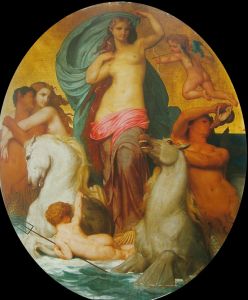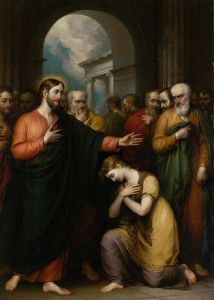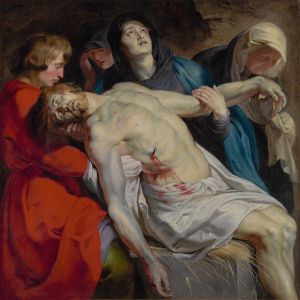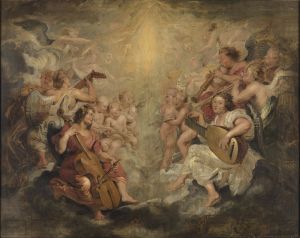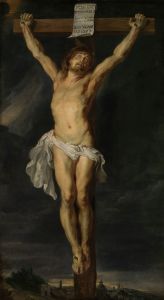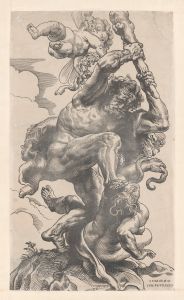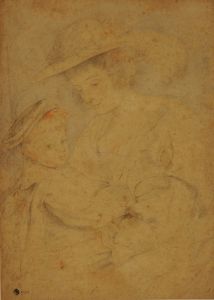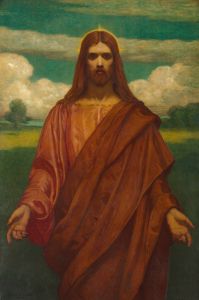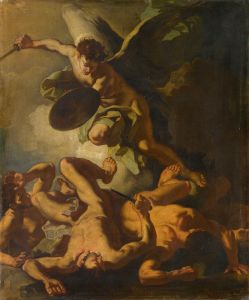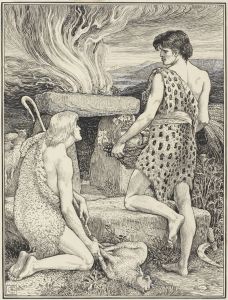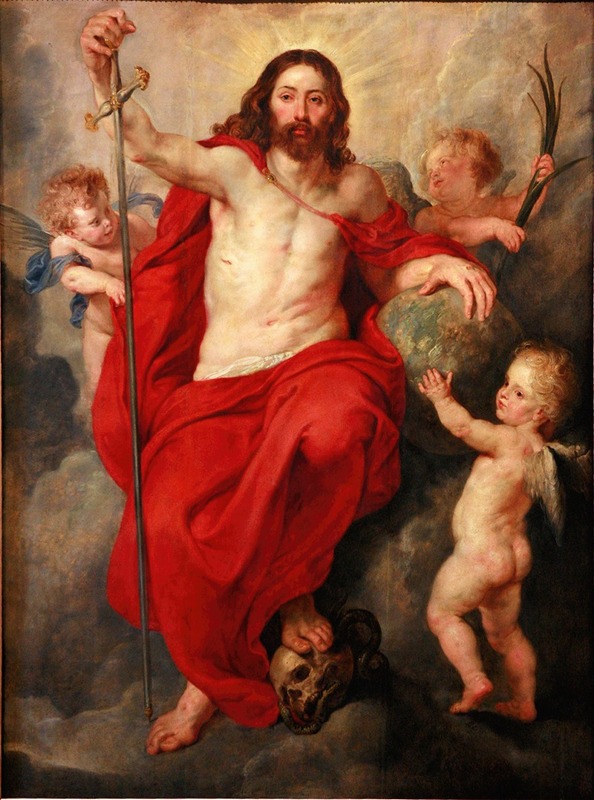
Christ triumphing over Death and Sin
A hand-painted replica of Peter Paul Rubens’s masterpiece Christ triumphing over Death and Sin, meticulously crafted by professional artists to capture the true essence of the original. Each piece is created with museum-quality canvas and rare mineral pigments, carefully painted by experienced artists with delicate brushstrokes and rich, layered colors to perfectly recreate the texture of the original artwork. Unlike machine-printed reproductions, this hand-painted version brings the painting to life, infused with the artist’s emotions and skill in every stroke. Whether for personal collection or home decoration, it instantly elevates the artistic atmosphere of any space.
"Christ Triumphing over Death and Sin" is a painting by the renowned Flemish Baroque artist Peter Paul Rubens. Created around 1618-1620, this work exemplifies Rubens' mastery in depicting dynamic compositions and dramatic expressions, hallmarks of the Baroque style. The painting is also known by its Latin title, "Christus Triumphans."
Rubens was born in 1577 in Siegen, Westphalia, and became one of the most influential artists of his time. He was known for his vibrant, energetic works that often depicted religious and mythological subjects. "Christ Triumphing over Death and Sin" is a prime example of his religious art, reflecting the Counter-Reformation spirit that sought to reaffirm the power and glory of the Catholic Church through visual means.
The painting portrays Christ in a triumphant pose, standing over the personifications of Death and Sin. Christ is depicted with a muscular, idealized body, emphasizing his divine strength and victory. His right hand is raised, possibly in a gesture of blessing or command, while his left hand holds a cross, symbolizing his crucifixion and subsequent resurrection. The cross is a central element, underscoring the theme of triumph over death and sin through Christ's sacrifice.
Below Christ, the figures of Death and Sin are depicted in a state of defeat. Death is often represented as a skeletal figure, while Sin may be shown as a demonic or monstrous entity. These figures are rendered with dramatic expressions and poses, enhancing the sense of their subjugation and Christ's supremacy. The use of chiaroscuro, a technique involving strong contrasts between light and dark, adds to the dramatic effect and highlights the central figure of Christ.
Rubens' use of color is also noteworthy. The vibrant reds, blues, and golds draw the viewer's eye to the central figure of Christ, while the darker tones used for Death and Sin create a stark contrast, emphasizing their defeat. The composition is dynamic, with swirling forms and vigorous movement, characteristic of Rubens' style.
"Christ Triumphing over Death and Sin" reflects the theological and artistic concerns of the early 17th century. During this period, the Catholic Church was engaged in the Counter-Reformation, a movement to counter the Protestant Reformation and reaffirm Catholic doctrine. Art played a crucial role in this effort, serving as a means to inspire faith and convey religious messages. Rubens, a devout Catholic, was deeply involved in creating works that supported these aims.
The painting is housed in the Kunsthistorisches Museum in Vienna, Austria, where it remains an important part of the museum's collection. It continues to be admired for its powerful depiction of a central Christian theme and its demonstration of Rubens' artistic prowess.
In summary, "Christ Triumphing over Death and Sin" by Peter Paul Rubens is a significant work of Baroque religious art. It showcases Rubens' ability to convey complex theological ideas through dynamic composition, dramatic expression, and masterful use of color and light. The painting remains a testament to Rubens' skill and his contribution to the visual culture of the Counter-Reformation.





